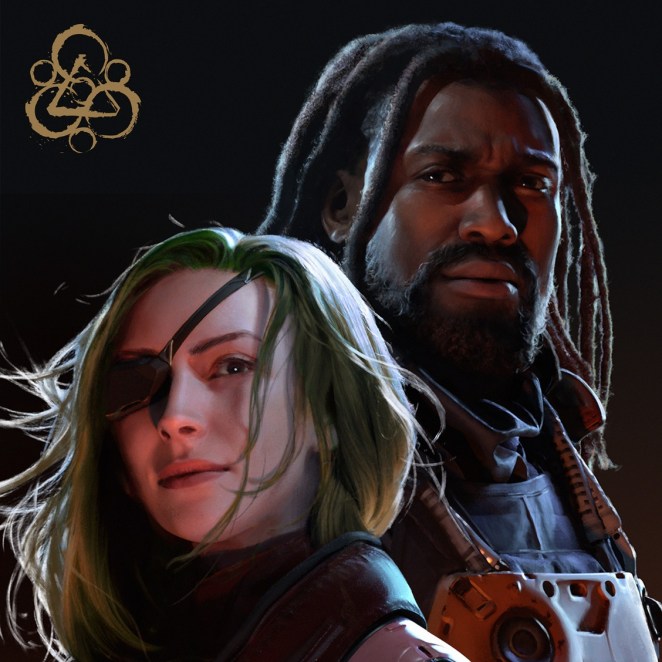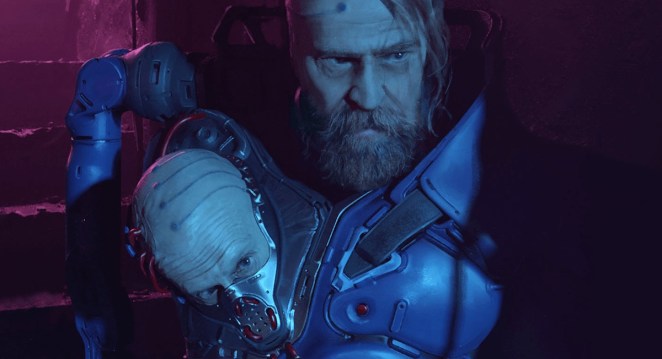In 2018, Coheed and Cambria returned to the sci-fi realm of The Amory Wars with Vaxis I: The Unheavenly Creatures—following a departure on the introspective The Color Before the Sun in 2015. The first of five albums in a series, and a continuation on from Vaxis, and The Amory Wars comic series, created by frontman Claudio Sanchez and Evil Ink Comics, follows a saga that started with the band’s 2002 debut The Second Stage Turbine Blade.
Videos by American Songwriter
Continuing the story around The Amory Wars is previous single “Shoulders,” a partially introspective tale exploring the ups and downs of being the “odd man out” on the journey for the band—Sanchez, guitarist Travis Stever, bassist Zach Cooper, and drummer Josh Eppard—who are about to mark their 20th anniversary in 2022.
“As a band, we’ve always been a little outside of the mainstream and that’s helped keep us true to ourselves,” said the band in a statement. “As people, it’s important to focus on your strengths and who you are, and not try too hard for acceptance.”
Of “Shoulders,” Coheed and Cambria vocalist and guitarist Claudio Sanchez added, “In art, in your career, in relationships, no matter how much you give of yourself or try, you have to accept that not everything in life can be a perfect fit.”

The latest single, “Rise Naiannasha (Cut the Cord),” explores the more real-life scenarios of love. “‘Rise, Naianasha’ explores the reach of love and loyalty and the reality that sometimes you need to be more than a shoulder to lean on,” said Sanchez. “You need to become the destroyer.”
American Songwriter spoke to Sanchez about continuing their ongoing saga in song, mixing more mediums (animation, film) within the storyline of The Amory Wars, and 20 years of Coheed and Cambria.
American Songwriter: What was the origin of “Shoulders”? How did this song start piecing together from the time of Vaxis I?
Claudio Sanchez: Being in isolation allowed me to sort of see some of the limitations, that Coheed had put up, subconsciously. When I think of our band, I think of us as a very open, creative kind of force. When I look at our records, I see us stretching in ways that maybe some other acts aren’t allowed to, if that makes sense. I decided to explore some of those avenues, and “Shoulders” is one of those songs that you haven’t really found yet in the Coheed discography, something touching on that pentatonic, bluesy rock kind of world. I’ve tried in the past to inject that vibe into what we do, but it always felt forced. This time around, when the chorus opens up, that’s when I realized this approach was right for now in Coheed. The structure and the verses might feel a little foreign, but once that chorus opens up, it really brings us home into what I think our audience is familiar with when they think of Coheed. It’s always been hard for me to do that, until “Shoulders.”
AS: You’ve already taken everyone into this world of The Amory Wars with the comics and most recently with Vaxis I, and the new tracks. What is threading “Shoulders,” “Rise Naiannasha (Cut the Cord),” and some of the other newer tracks together within this ongoing storyline?
CS: In the past, when I look at some of our records, I think of us as being as free as we possibly could be, but then you start to realize there are some limitations that you have could put up for yourself, that you didn’t think were limitations like thinking this or that vibe doesn’t necessarily work for what we do. Once that statement comes across in your mind, you’ve put up this wall. I think with this new record of Vaxis [2], and with songs like “Shoulders” and some of the others that are coming out, conceptually there is the theme of breaking out of those zones and exploring territories that are foreign.
Because there’s the concept behind everything, there are these perspectives that the songs are sort of jumping off from, I think the universal theme of “Shoulders” is almost like this ambiguous thing. Sure, it has its place within the relationships of Nia Worn and the other characters, so there are some similarities and things that resume in terms of the concept, but when I think of the song and the universal theme, I think of the band. I think of the 20 years of the band, and coming to that place where you accept that you’re not really going to be for everybody. Coheed has a very interesting history. We’ve always felt like the odd man. I think that was our strength, and still is the strength of Coheed. And I think that’s what the song is really about, a call to be accepting of your oddity, because that is your strength, and it’s good if you’re not for everyone, because the community that you’re creating, they’re putting their heart into and really care.
AS: Now more than 20 years since Coheed formed and nearly two decades since your debut, how does this timeline compute with you?
CS: I think of my life in two parts: the one before Coheed and the one in Coheed. I’ve tried to think of my life before the band, and there’s very little I remember. I think it takes up so much of my mental energy that I don’t know if I remember a life before then. I like to think of it as the band’s 20th anniversary [not necessarily the 20th of The Second Stage Turbine Blade]. We’ve been in bands prior. Then, it was a dream. And in 2002, our dream became reality. That was the beginning.
AS: Listening back does an album like The Second Stage Turbine Blade still resonate with you now?
CS: Because I’m so removed from it, I would say no, but when I start to play it, there’s an energy. I get very excited. I was going through a song just 10 minutes ago “Junesong Provision,” and I don’t write songs like that anymore. I’ve definitely progressed past that, but it’s thrilling to me. I wouldn’t necessarily listen to The Second Stage Turbine Blade for the enjoyment of it, but performing it. We wrote that record as kids in someone’s bedroom. We weren’t making a record, like, but it became a record and the charm in that piece of music. Is that it has tons of flaws. It’s a band before it really got its legs. I’m curious to hear what that record would have been if we actually approached it now. It wouldn’t be about ‘we can do it so much better now.’ There’s no way to beat it. It captures these naive four members trying to create a statement. It would really be to tribute the 20 years that we’ve become.
AS: Being in the band for more than two decades now [Coheed formed in Nyack, NY in 1995] do you feel like songs still come together in the same way?
CS: I’m relearning a lot of these songs and in doing so it reminds me of they came about. At that time in my life, I was writing songs on acoustic guitar and recording them on a four-track cassette player. That’s how I learned how to write music. Nowadays, it’s not that much different, but there are new instruments that come into play. I became involved in synth and trying to play piano over the past 10 years, so now there’s a variety of how songs are started. It’s trying to lay down a bed of music with whatever instrument I have in front of me, and then the melody will sort of come out of that. I’ll start to sing and with that, the phonetic sounds will inform what the lyrics will be about.

It’s just really the instrumentation. I was a guitar player before I was a songwriter. I wasn’t really approaching it from a lyrical place. It was always about what the guitar was going to do. When I became the singer in a band, it all started to come naturally, this counter to whatever I’m performing on this instrument.
AS: Once the anniversaries start surfacing, that means you’ve been around for some time. The Aftermath: Ascension also turns 10 in 2022. Are there any plans to mark this anniversary as well?
CS: Oh, man, we have too many anniversaries. We’re getting old. I want to think that it’s a sign that we’ve been doing something right. We’re so fortunate. I had a conversation today with Travis [Stever], talking about some of the songs. Travis and I have been friends since I was 13. We’re basically 17-year-olds in 43-year-old bodies. We’re really lucky that we get to talk about our passions still to this day.
Ultimately, with the comic books and with all the storytelling, I would love to step into another medium. That would be the ultimate way to get this music to do something else. We’ve always incorporated the story into performance when it made sense but to see it sort of kind of get its own legs and another sort of medium that would be pretty sick. We always talk about so we the thing that. The metamorphosis of the music is to see it come to life in some other dimension, outside of the comics and outside of music. I think it would be beautiful to see something play out whether it’s animation, or a movie because there’s just so much source material with Vaxis and coming into part two of that and The Amory Wars and The Aftermath…
Dare I say, but there is a saga.
Photo by Jimmy Fontaine/Elektra
